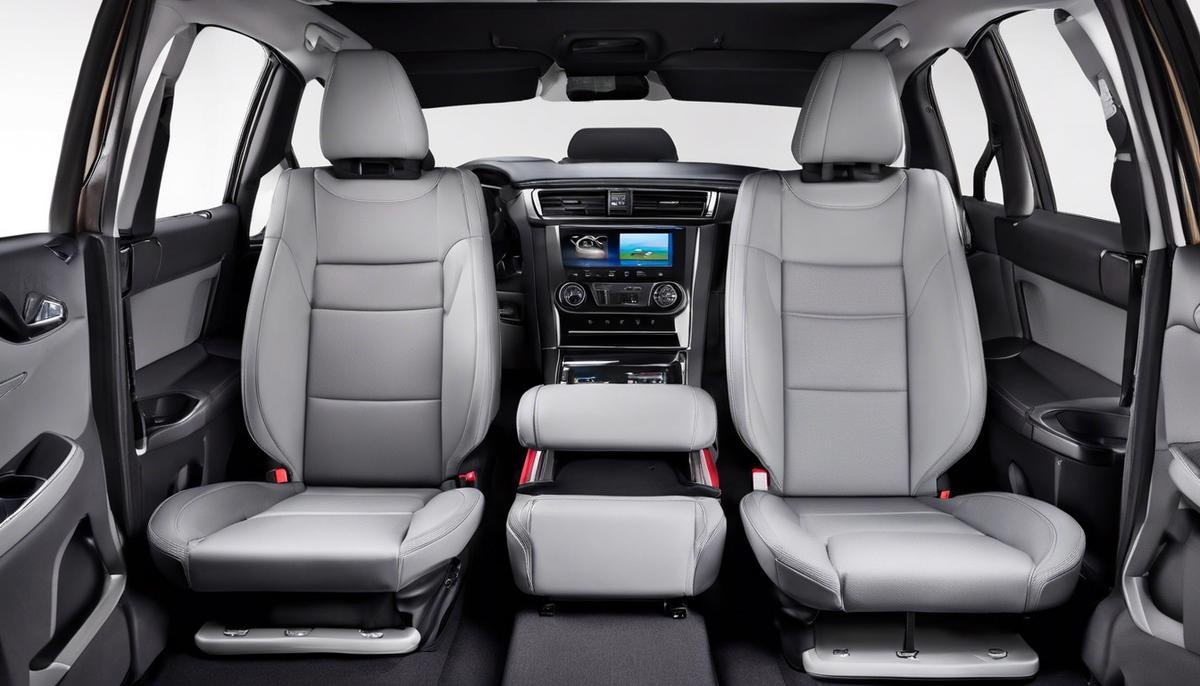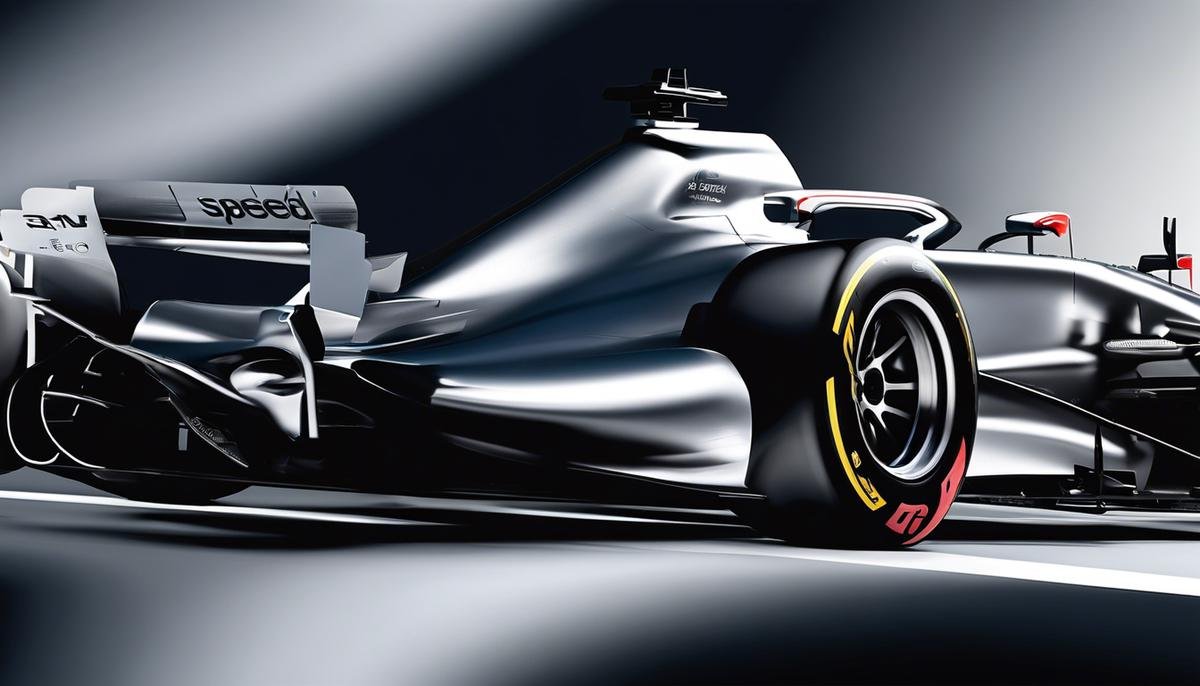
When we slip behind the wheel of our vehicles, we're not just starting an engine—we're entrusting our safety to a network of sophisticated systems designed to protect us in the flash of a second. Among these systems is the Supplemental Restraint System (SRS), a critical safety component that often goes unnoticed until the moment of need. The SRS is a marvel of modern automotive safety technology, working quietly alongside your active driving efforts to shield you from harm. This essay dives deep into the SRS, revealing the intricate dance of sensors and algorithms that spring into action to deploy airbags and harness seatbelts, potentially saving lives when a collision occurs. Delving into the components, standards, and futuristic vistas of the SRS, we invite you on a journey to understand this silent guardian that rides with you every mile of your journey.
Overview of SRS Technology
Maximizing Safety on the Road: The Integral Role of Supplemental Restraint Systems (SRS)
When it comes to automotive advancements, vehicle safety stands out as a non-negotiable priority. Among the myriad of safety features that modern vehicles offer, Supplemental Restraint Systems (SRS) are top-tier components crucial for protecting passengers during the unforeseen event of a collision. Let's dive into how SRS technology serves as a frontline defense in vehicle safety.
SRS, commonly known as airbag systems, work in tandem with seat belts to reduce the risk of fatality and severity of injuries in a crash. The primary function of SRS is to act as an additional restraint that supplements the seat belt system – hence the term "supplemental." While seat belts are effective in restraining occupants and reducing the likelihood of them colliding with interior elements or being ejected, SRS provides a necessary cushion that diminishes the impact force.
In an event of a collision, an array of sensors within the vehicle triggers the deployment of airbags. These sensors are incredibly sophisticated, capable of determining the severity and angle of impact. Within milliseconds, a controlled explosion is initiated in the airbag inflator, rapidly inflating the airbag with a harmless gas. This swift response time is critical – the goal is to fully inflate the airbag before the occupant makes contact, providing a buffer that absorbs energy and reduces the force exerted on the person's body.
The SRS is not limited to the frontal airbags that most people are familiar with; it encompasses a comprehensive system designed to protect occupants from multiple angles. Side-impact airbags, curtain airbags, and even knee airbags are integral aspects of the SRS, each designed to guard against specific types of collision forces. Moreover, advancements in SRS technology have led to the introduction of adaptive airbags that take into account the occupant's size, position, and seat belt use – tailoring the deployment to individual circumstances for optimized protection.
The effectiveness of SRS is evident in its impact on vehicle safety ratings and its influence on reducing injuries in real-world collisions. Data has consistently shown a decrease in severe head traumas, chest injuries, and abdominal damage in vehicles equipped with a comprehensive SRS.
However, it's imperative to remember that the SRS is a supplemental system. It doesn't negate the importance of properly wearing seat belts at all times – seat belts and airbags work in concert to provide the highest level of protection.
In summary, the role of SRS in vehicle safety cannot be overstated. With each technological advancement and refinement, SRS systems are becoming more adept at mitigating the risks associated with vehicle collisions. The continued innovation in sensor technology, deployment mechanisms, and airbag design is a testament to the relentless pursuit of automotive safety. Safe travels hinge on effective restraint systems, and SRS is a cornerstone of that initiative, making it an indispensable feature for anyone who steps into a modern vehicle.

Components of an SRS
When delving deeper into the Supplemental Restraint Systems (SRS), it's imperative to understand the key components contributing to its efficacy. Given the existing knowledge base on the varied aspects of SRS, let's dissect the crucial parts that orchestrate the life-saving symphony of modern vehicular safety.
A centerpiece of SRS technology is the control module, essentially the brain of the system. The control module constantly analyzes data from an array of sensors, determining, within milliseconds, whether the severity of a collision merits airbag deployment. Precision in this decision-making process is non-negotiable as it is critical to deploying the airbags in a timely manner, ensuring maximum protection.
The next vital components are the crash sensors. Positioned strategically around the vehicle, these sensors detect collision forces and send signals to the control module. Their placements are meticulously calculated, ensuring spatial coverage so that any impact point can be instantly registered and assessed.
Supplementing the crash sensors are the occupant detection systems, often incorporating weight sensors in the passenger seat. These systems evaluate if there's a passenger present and, if so, their size and weight to tailor the airbag deployment accordingly. This nuanced adjustment is indicative of evolved SRS architecture – a move from one-size-fits-all to a bespoke safety solution.
Another component, lesser-known but equally important, is the diagnostic module. It monitors the health of the SRS, conducting regular checks on airbags, sensors, and associated circuitry. Any faults detected are immediately flagged, typically indicated by an illuminating SRS warning light on the dashboard. This ensures that any potential failures can be addressed well before the systems are called upon in a critical moment.
Connecting all these key components are the wiring and electrical connections that form the nervous system of the SRS. They communicate sensor readings, deliver deployment commands to airbag inflators, and convey diagnostic checks. The integrity of this wiring is paramount — any malfunction could compromise the entire system's responsiveness.
Lastly, there's the airbag itself, an SRS component that often gets the most attention. The airbags comprise tough fabric bags and inflators that are activated by a gas generation system. They are fine-tuned to deploy at various speeds, depending on the severity of the collision and information from the control module.
In sum, the control module, sensors (both crash and occupant detection), diagnostic systems, intricate wiring, and the airbag assembly constitute the backbone of an SRS. Together, they exemplify the technological harmonization that occurs within split seconds to safeguard passengers from harm. And as technology evolves, so does each component of the SRS, mirroring the fastidious commitment to enhancing vehicular safety in an ever-changing automotive landscape. Without a doubt, the complexity and sophistication of SRS components are reflective of the innovation investment car manufacturers make towards achieving the ultimate goal: zero fatalities on the road.

SRS and Modern Vehicle Safety Standards
Delving into the intricate alignment of Supplemental Restraint Systems (SRS) with current vehicle safety standards evokes immediate attention to regulatory compliance and the overarching objective of the safety standards: protecting passengers during a collision. While the synergy between SRS and seat belts is well-established, further analysis reveals a sophisticated interaction among several high-tech components that consolidates the SRS's role as a critical safety net.
Notably, SRS technology is engineered to meet and often exceed standards set by organizations such as the National Highway Traffic Safety Administration (NHTSA) in the United States and the European New Car Assessment Programme (Euro NCAP). Specifically, these standards encompass detailed regulations concerning the performance and functionality of all safety features within vehicles, including the SRS.
The SRS control module—essentially the system's brain—communicates with an array of crash sensors located throughout the vehicle. These sensors are engineered to detect collision forces and send rapid-fire data to the control module, which uses this information to determine if and when to deploy airbags. Compatibility with safety standards is rooted in the precision and reliability of these sensors; they must activate the necessary restraining mechanisms within milliseconds of a collision.
Occupant detection systems add another layer of sophistication by gauging the presence, weight, and positioning of passengers, allowing the SRS to tailor its response to individual scenarios. This harmonizes with safety protocols aimed at minimizing the risk of airbag-related injuries, which is of paramount importance for children and small-stature adults.
Furthermore, the diagnostic module harbors crucial importance, continuously monitoring the health of the SRS and signaling the need for preventative maintenance or immediate repair. This proactive approach is in direct response to the safety guidelines that mandate the functionality of safety systems at all times.
The integrity of wiring and electrical connections is another non-negotiable aspect aligning with safety standards. Faulty or compromised wiring could spell disaster, rendering the system unresponsive when it’s needed most. Reliable electrical infrastructure within the SRS ensures that communication lapses are virtually non-existent.
Lastly, airbags themselves, although familiar, have evolved into a nuanced safety feature. Today's vehicles might contain a variety of front, side, knee, and even pedestrian airbags designed to protect from multiple angles. Intelligent deployment strategies and materials further enhance their protective capability, harmonizing with regulatory demands for all-around vehicle occupant safety.
In sum, the alignment of SRS technology with current vehicle safety standards reflects an unfaltering commitment to occupant protection. This technology's intricate design and functionality not only adhere to high safety benchmarks but often set the stage for the next generation of safety innovations. In a realm guided by precision, reliability, and adaptability, SRS stands firmly as a pillar of vehicular safety, constantly evolving to meet the demands of an increasingly safety-conscious public.

Future of SRS in an Evolving Tech Landscape
Understanding the New Automotive Trends Shaping SRS Technology
As automotive technology races forward, it's essential to look at the ways in which Supplemental Restraint Systems (SRS) are evolving to match the pace. This evolution is multi-faceted, encompassing advancements in materials, integration with vehicular artificial intelligence, and adherence to the ever-tightening web of safety regulations.
One critical area of development is the use of lighter, stronger materials for airbag construction. Manufacturers are experimenting with fabrics and inflators that promise quicker, more controlled deployment, minimizing the potential for injury caused by the airbag itself. This tweaking of materials also contributes significantly to reducing vehicular weight, aiding in fuel efficiency – an ever-present concern of automakers and consumers alike.
With the advent of autonomous cars, SRS technology must evolve to interact with the vast array of sensors and processors that make self-driving cars a reality. There's a pertinent focus on ensuring that SRS systems can interpret complex data from the vehicle to deliver appropriate restraint in the moments leading to a potential collision. This predictive capability maximizes the milliseconds before impact, making the protective measures as proactive as possible.
Connectivity between the SRS and vehicle's telematics systems is another burgeoning area. This synergy strengthens the feedback loop that occurs during and after an incident, operationalizing crash data to refine safety systems further. It's not just about responding to an incident anymore; it's about using that data to preempt future occurrences. Automatic emergency communications can be initiated by an SRS module, ensuring rapid response to incidents.
An evolutionary leap in SRS technology is seen in the integration of pedestrian airbags. Deployed upon impact with a pedestrian, these airbags mitigate injury to those outside the vehicle, complementing the extensive safety features within the car and pushing the boundaries of whom SRS technology is designed to protect.
In the midst of this evolution, there's an increasing push to ensure compatibility between SRS technology and green initiatives. Given that electric vehicles (EVs) and hybrids represent a significant chunk of the modern automotive trend, the design and function of SRS units must align with the unique architectures of these vehicles. For instance, considerations around battery placement and the possibility of high-voltage scenarios are key in tailoring SRS approaches.
Moreover, as vehicle interiors evolve with customizable seating configurations, perhaps even eliminating the traditional front-facing orientation, SRS systems must adjust accordingly. Airbag placement and operation must cater to a diversity of seating arrangements and occupant positions, which can potentially multiply the complexity of deployment algorithms.
Lastly, developments in user-interface technology mean that controls for SRS system diagnostics and settings are becoming more user-friendly and informative. It's no longer just a dashboard warning light; drivers can engage with their vehicle's safety systems through sophisticated touchscreens or even voice commands, encouraging greater awareness and preemptive maintenance.
These evolutions showcase that SRS technology is not just following automotive trends, it's on the cutting edge, driving the conversation on passenger safety in the 21st century. With each step towards more autonomous and smart vehicles, the sophistication of SRS must match stride – it's a relationship that's mutually enhancing and fundamentally essential. The future of automotive safety revolves around an unending pursuit of perfection, where the marriage of advanced materials, smarter systems, and seamless integration leads the charge. Each innovation is a step closer to the aspirational endgame: a collision-free reality.

Troubleshooting and Maintenance of SRS
While the introduction and integration of SRS (Supplemental Restraint Systems) are non-negotiable for state-of-the-art vehicle safety; common issues with these systems can compromise their efficiency and, ultimately, the safety of passengers. Addressing these complications with technological finesse and a proactive stance is critical. Here’s a rundown of prevalent concerns and their corresponding solutions.
False Deployment of Airbags
Airbags deploying without an actual collision poses significant safety threats and inconvenience. The cause often traces back to faulty crash sensors or misguided signals from the control module. Remediation involves precise diagnostic procedures using advanced scanning tools, pinpointing the defect, and then refining or replacing the erroneous components.
Non-Deployment during Accidents
The opposite scenario, where airbags fail to deploy in an actual collision, can be catastrophic. It usually indicates a malfunction in the control module or sensor failure. Regular system diagnostics and preemptive testing of the electrical circuit integrity can prevent this failure. In the event of such issues, it’s essential to engage with certified technicians for comprehensive system overhauls.
Sensor Calibration Errors
Accurate sensor calibration is vital for the precise operation of the SRS. Calibration can drift due to minor impacts or electrical interference. Technicians must recalibrate sensors, ensuring alignment with OEM specifications. This process often involves the use of proprietary calibration tools and software.
Occupant Detection System Malfunctions
Occupant detection systems must accurately assess passenger presence and mass to modulate airbag deployment. Issues arise when the system misreads the data, potentially leading to inadequate protection. Resolving such issues may involve reprogramming the system or replacing faulty sensors to maintain the detection accuracy.
Warning Light Activation
An illuminated SRS warning light on the dashboard signals a system fault. The first line of action is to conduct an onboard diagnostic check to retrieve and analyze the error codes. Expert attention might be required to decipher the codes and undertake the necessary corrective measures, which could range from software updates to parts replacement.
Electrical Problems
Wiring harnesses and connections are the lifelines of the SRS; if compromised, the complete system could falter. Regular inspections to detect wear, corrosion, or disconnections can preclude major electrical failures. Prompt rectification, potentially encompassing re-wiring or insulating exposed connections, is paramount.
Compatibility with Vehicle Modifications
Customizations to the vehicle's interior may directly affect the SRS's functionality. Enthusiasts adding aftermarket accessories or reconfigurations should consult with specialists to ensure these modifications do not interfere with SRS components.
End-of-Life Airbag Module Issues
Airbag modules have a manufacturer-specified lifespan, after which their reliability can decrease. Vehicle owners must be aware of these timelines and replace aging modules to prevent performance degradation.
In conclusion, understanding and preemptively addressing these common SRS issues aligns with the proactive safety-first ideology. Technological solutions play a crucial role in detecting, diagnosing, and correcting any SRS defects, thus continuing the relentless quest for automotive safety excellence.

As we've navigated the complex landscape of the Supplemental Restraint System, it's become clear that this unsung hero of automotive safety is constantly evolving, adapting to the ever-increasing demands of technology and protection standards. The journey through the components, regulatory landscapes, and the future possibilities for SRS technology has armed us with knowledge that not only instills confidence in the systems that safeguard us but also emphasizes the responsibility of adhering to maintenance protocols to ensure their reliability. Remember, the integrity of an SRS cannot be taken for granted—it requires ongoing attention. Stay informed, stay proactive, and drive with the assurance that your vehicle's SRS is your steadfast ally on the road.
Image Source: https://writio.com/


